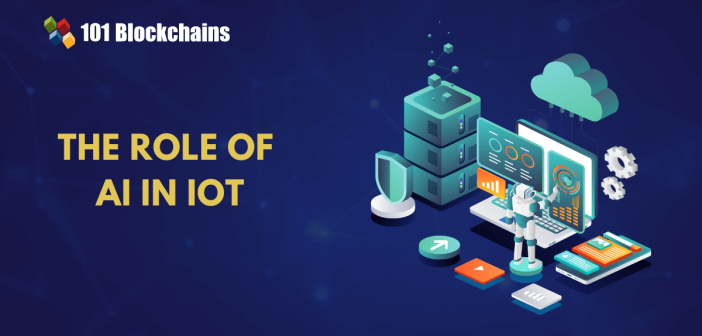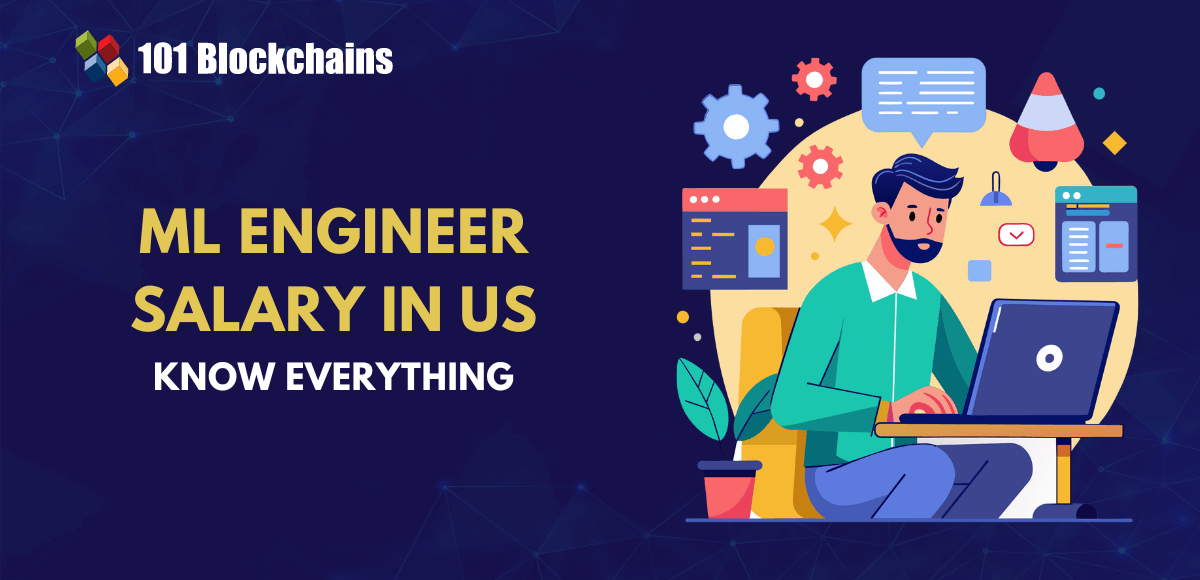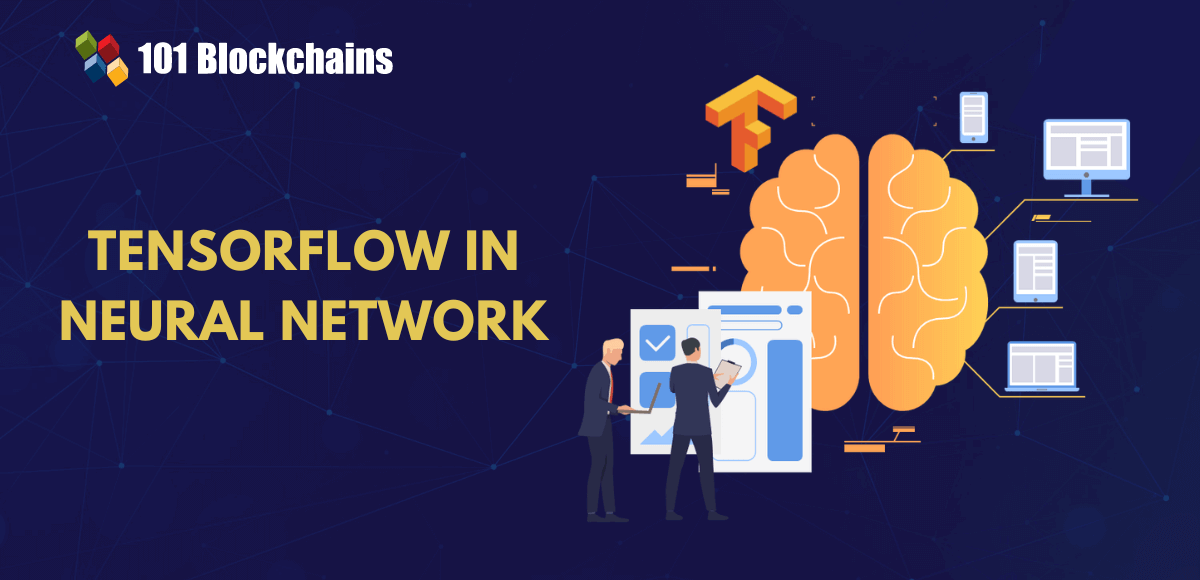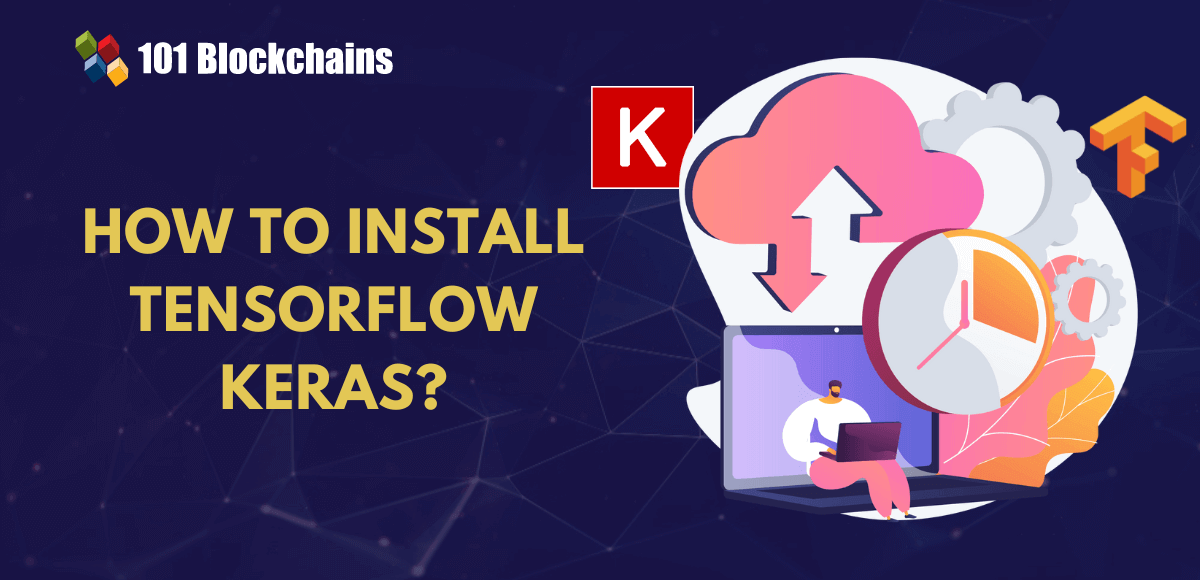The terms AI and IoT have become ubiquitous and emerged as the most prominent highlights of the future of technology. Businesses must understand the role of AI in IoT to unlock new business opportunities across industries. For example, the combination of artificial intelligence and IoT can improve customer experiences, boost growth, and ensure better productivity in business operations. Statista has pointed out that the AI market might grow by around 40% by June 2024.
On the other hand, the IoT market also expects more than 16 billion new connections by 2024. AI and IoT can create a smart future in which machines don’t just work by following the instructions fed to them. You may think of a robotic utopia in the future that would grow on the foundation of artificial intelligence and Internet of Things. Let us learn more about the significance of AI in IoT with examples.
What is the Importance of AI for IoT?
Before you try to uncover the hidden potential of the combination of AI and IoT, you must know about both technologies. You can develop a better understanding of the application of AI in IoT by figuring out the potential of each component of the combination.
Artificial intelligence refers to the simulation of human intelligence in machines that can enable them to learn autonomously, reason, and perform tasks. AI uses different technologies, such as machine learning, NLP, computer vision, and deep learning, to process massive datasets, make pattern recognition, make predictions, and take relevant actions on the basis of valuable insights.
On the other hand, Internet of Things or IoT is a network of devices connected to each other. The devices have software, connectivity features, and sensors that help them collect and transfer data, thereby enabling communication between them and the physical world. The importance of artificial intelligence in IoT revolves largely around the diversity of IoT applications. IoT applications in healthcare, smart homes, agriculture, industrial automation, and transportation have proved how artificial intelligence can take IoT applications to the next level.
The growing number of IoT devices also offers new possibilities for generation of more data. With more than 29 billion IoT connections expected by 2030, artificial intelligence can play a formidable role in enhancing IoT networks. IoT networks can collect and manage large amounts of data that can serve as inputs for AI algorithms. Subsequently, AI algorithms can use the data of IoT devices to serve actionable insights.
Want to understand the fundamentals of the Internet of Things (IoT)? Enroll now in the IoT Fundamentals Course!
How Can Artificial Intelligence Work for IoT?
Internet of Things and artificial intelligence are transforming each other with their unique advantages. The combination of AI and IoT brings useful insights to the table for businesses with prospects for using AI to enhance existing IoT applications. You can find answers to the question “What is the use of AI in IoT?” by referring to examples such as the Nokia production site in Finland. The production facility utilized intelligence automation and digital twins to achieve better productivity and faster time-to-market.
The merger of AI with IoT can introduce unique functionalities in the form of AIoT or artificial intelligence of things. AI can replicate human intelligence in machines, and IoT serves as a strong connected infrastructure for information exchange. Therefore, the combination of the two technologies helps with effective analysis and interpretation of data rather than just collecting and transferring the data. On top of that, the AI and IoT interplay can also enhance IoT operations, data analytics, and user interactions.
The overview of individual IoT and AI examples would show glimpses of what they can achieve independently. However, AI can add value to IoT by leveraging new features for decision-making and machine learning. On the other hand, IoT can improve AI with the help of data exchange, connectivity, and signaling. Here are the steps that can explain how AI would work for IoT.
- IoT devices, including cameras, industrial machines, sensors, and wearables, collect data continuously and transfer it to cloud platforms or centralized servers.
- In the next step, AI algorithms help analyze data collected by IoT devices to identify patterns, anomalies, and correlations.
- The discussions about IoT and AI future also emphasize how the combination of the two technologies can lead to comprehensive data analysis. AIoT systems can use the insights extracted from data analysis to provide valuable recommendations that can empower autonomous decision-making.
- Subsequently, AIoT systems can take different types of actions as a response to the insights derived from data analysis. On top of that, AIoT systems can also use continuous learning mechanisms to achieve performance improvements over time.
What are the Advantages of Using AI in IoT?
You can find a better answer to “What is the use of AI in IoT?” by exploring the benefits of combining the two technologies. Businesses look for opportunities to combine AI and IoT for benefits, such as enhancing customer engagement, operational efficiencies, and top-line growth. Here is an outline of the most noticeable benefits of combining AI and IoT.
-
Real-time Use of Data
The combination of AI and IoT supports real-time analysis of data generated and collected by IoT devices. You can clearly identify the role of AI in IoT by exploring how artificial intelligence enables real-time data analysis. It can offer faster responses and access to insights through immediate processing of sensor data by AI systems. Real-time data analysis can ensure better productivity and efficiency in different areas, such as predictive maintenance, supply chain optimization, and quality control.
-
Better Security and Risk Management
IoT networks can leverage the power of AI to achieve promising improvements in security and risk management. For example, AI can help in detection of strange activities and malicious patterns, followed by triggering responses to breaches. The different IoT and AI examples show that AI systems can use data obtained from cameras and enable real-time analysis to detect intrusions.
On top of it, AI in IoT can also improve privacy protection by leveraging secure communication protocols and data encryption. Stronger authentication mechanisms with the combination of AI and IoT can ensure that authorized users can only access sensitive information.
-
Personalization of User Experience
The prospects for IoT and AI future also extend toward new opportunities for personalizing user experiences. AIoT can help in achieving contextual applications according to preferences and behavior of users.
For example, AI systems can learn the temperature and level of lighting preferred by homeowners with IoT devices. As a result, they can ensure automatic adjustments in temperature and lighting according to different times of the day. Furthermore, intelligent systems also offer personalized recommendations through comprehensive data analysis to achieve better customer satisfaction.
-
Resource Optimization and Automation
Artificial intelligence also helps in effective optimization of resource management in IoT networks in different ways. The application of AI in IoT can also ensure optimization of electricity consumption through adjustment of lighting and heating systems on the basis of occupancy in smart homes.
In the case of industries, artificial intelligence in IoT networks can empower predictive safeguards for machines and systems. Furthermore, applications of AI in IoT in industrial settings also enable streamlining of business operations through automation of routine tasks. For example, the use of AIoT in a warehouse can facilitate automated inventory control and order fulfillment.
Understand the actual potential of AI and the best practices for using AI tools with the AI For Business Course.
What are the Potential Applications of IoT and AI in future?
The combination of AI and IoT brings some unique surprises for everyone, including the general public and industries worldwide. However, the impact of artificial intelligence in IoT can also be perceived as a trend that will fade away soon. Therefore, it is important to identify the areas where AI and IoT can achieve crucial benefits for users and businesses.
The interplay between AI and IoT can empower smart cities, environmental monitoring, agriculture, and education. For instance, the integration of AI with IoT can create smart cities with the assurance of improved functionalities. Smart cities can use AI and IoT for energy-efficient buildings, improved public utilities, and intelligent traffic management.
You can notice a prominent example of combining AI with IoT in the case of Nest Labs. The company has designed smart thermostats to offer better convenience to users. Smart thermostats utilize IoT to monitor temperature and relevant controls effectively by utilizing smartphone integration.
Another notable example that shows the road to a better IoT and AI future is that of Tesla and its self-driving cars. With the power of AI and IoT, all of Tesla’s self-driving cars would work like a connected network. As a result, information learned from one Tesla car can help in drawing predictions about traffic levels and behavior of pedestrians in different scenarios.
Identify new ways to leverage the full potential of generative AI in business use cases and become an expert in generative AI technologies with Generative AI Skill Path
Final Words
The use of AI in IoT can open new opportunities for the growth of technology. As AI emerges as a powerful tool for automation and extracting valuable insights, it can empower IoT networks. The answers to ‘What is the use of AI in IoT?’ point to the ways in which artificial intelligence can become a game-changer for IoT. Interestingly, the proven use cases of AIoT in different industries showcase that businesses can achieve promising benefits by combining the two technologies. Learn more about AI and IoT to discover the best practices for using them together right now.








